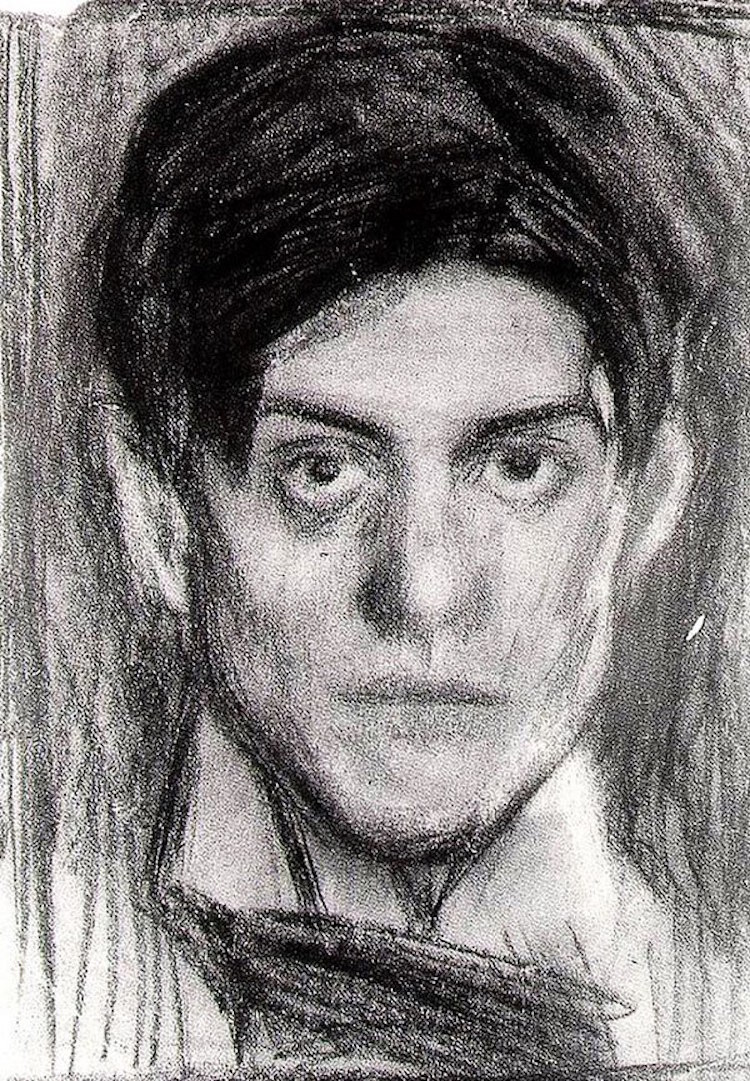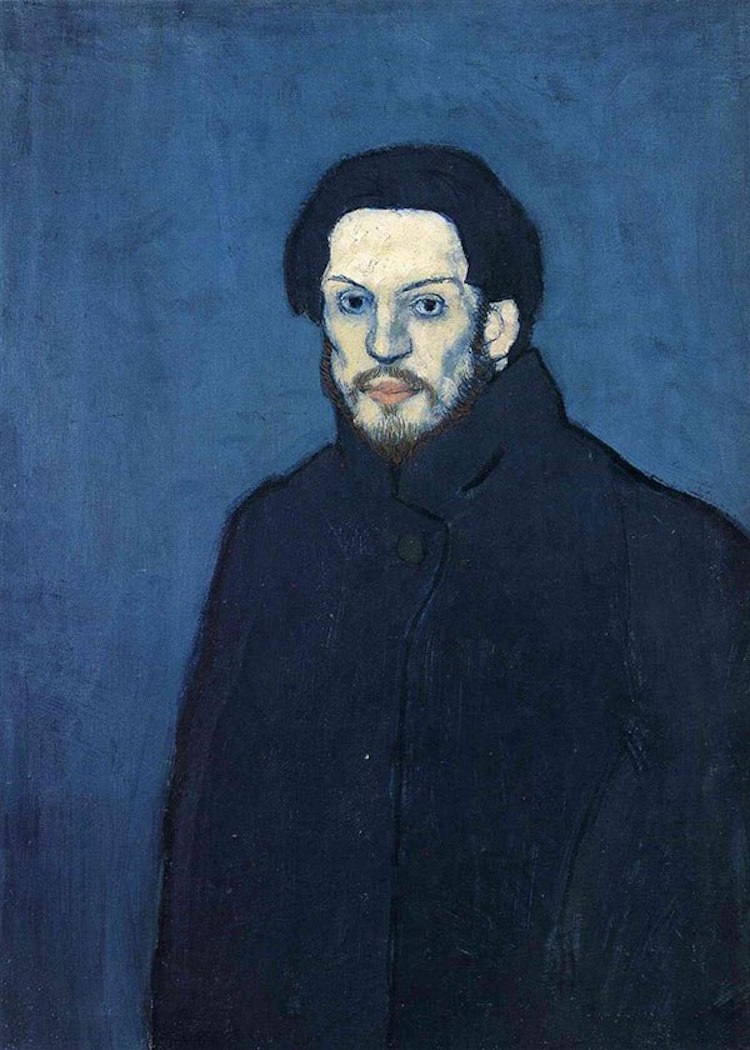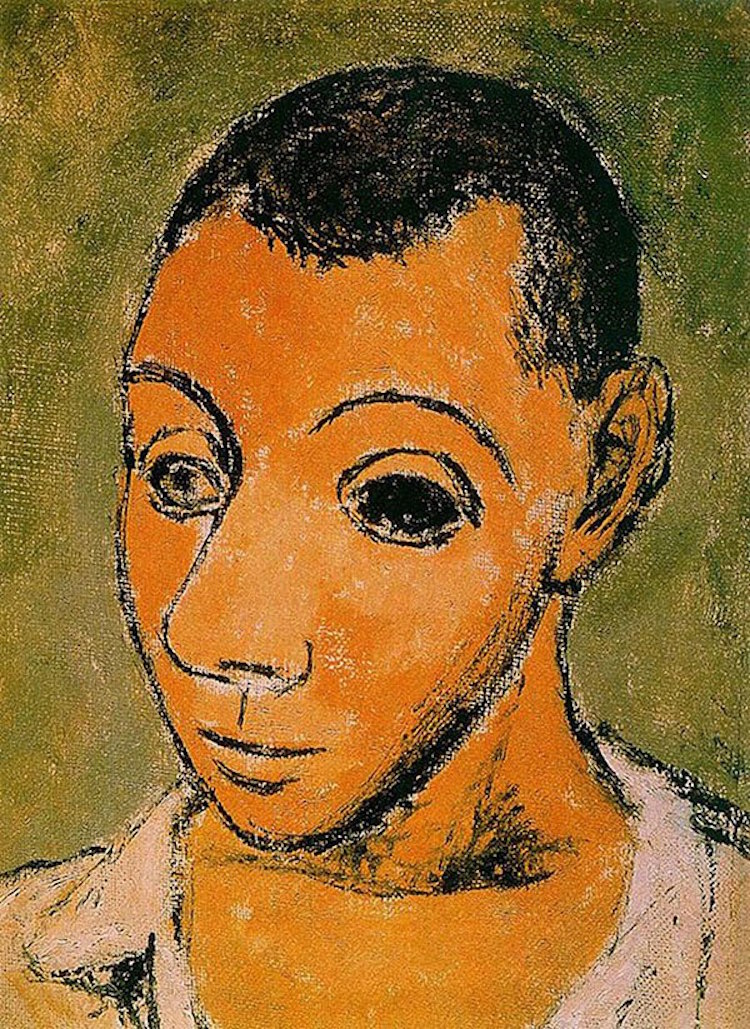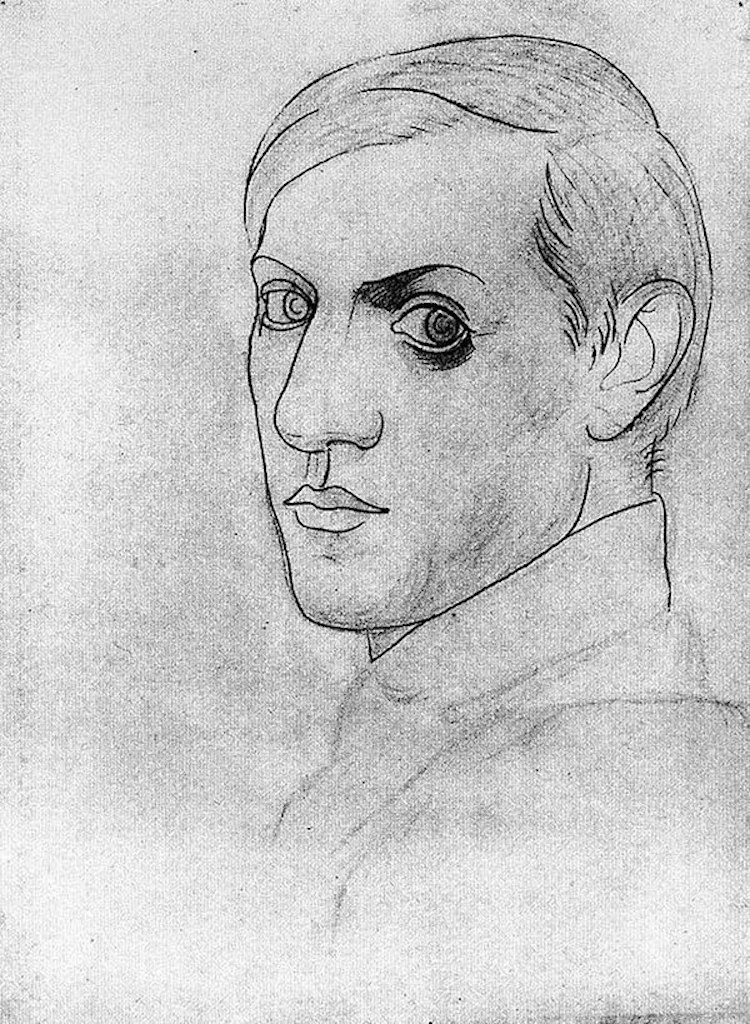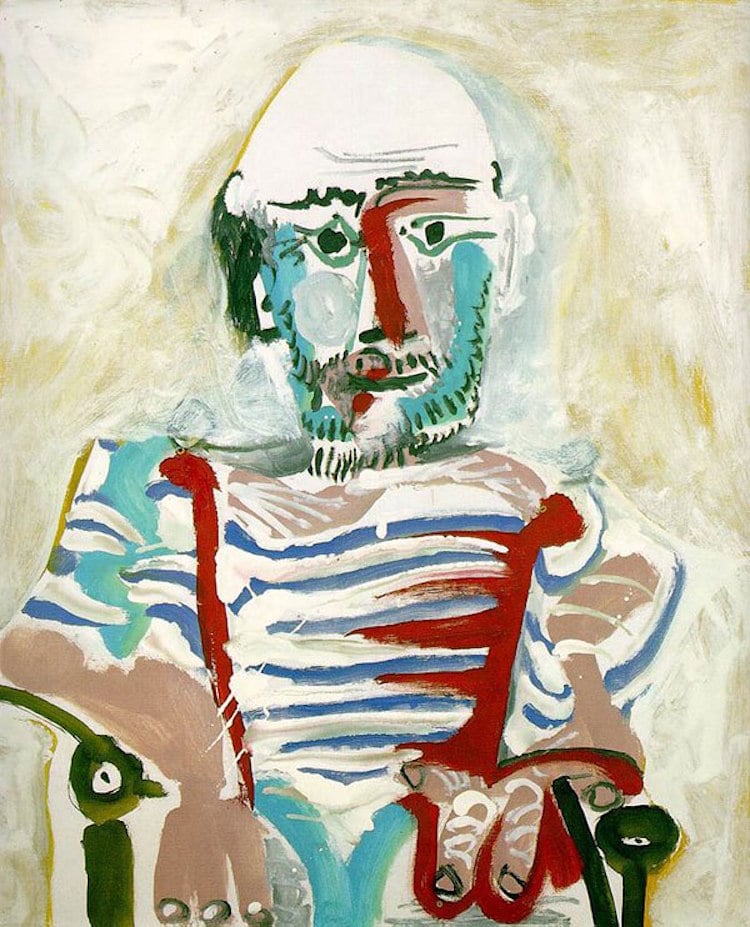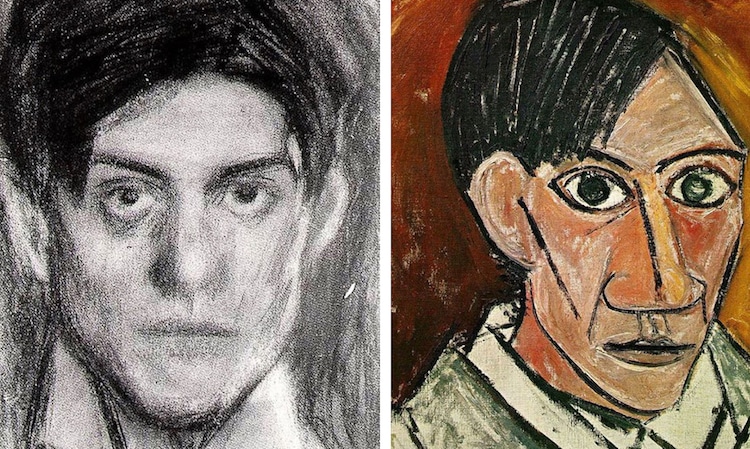
Pablo Picasso self-portraits; Left: 18 years old, Right: 25 years old
Known as one of the most prolific painters of Modern Art, Pablo Picasso (1881–1973) was undoubtedly a man of many talents. The Spanish artist experimented with and excelled in many mediums, from painting and drawing to sculpting and collaging. In addition to different art forms and unique materials, however, Picasso also worked in a spectacular array of styles. This constantly changing aesthetic approach is evident in his series of self-portraits, which he painted from the age of 15 until 90.
While many people recognize him only for his avant-garde, topsy-turvy paintings, his earlier work—like his self-portraits from 1896 and 1900—exhibit his ability to paint and sketch beautiful true-to-life depictions. Though a gifted draughtsman, Picasso did not dabble in this style for very long. In 1901, he entered his Blue Period—a phase in which he painted somber, stylized scenes in cool blue tones, as evident in his striking self-portrait from the same year.
Following his blue period, Picasso’s work began to show Primitive influences. He also began to use a warmer color palette of pinks during his Rose Period, and, in 1907, his well-known Cubist stage began. As apparent in his self-portrait of the same year, this style incorporates geometry, fractured forms, and thick, black lines. Following this period, Picasso dabbled in a myriad of aesthetics, from Neoclassicism to Surrealism (perceptible in his dreamy piece from 1938), though he often returned to both his signature primitive aesthetic and his quirky Cubist style until his death in 1973.
You can follow Picasso’s stunning shifts in style below.
See how Pablo Picasso’s art style evolves through his lifelong series of self-portraits.
15 Years Old (1896)
Picasso’s self-portrait from 1896 was made when the artist was just 15 years old. At this point, he represented himself in a realistic style with visible brushstrokes and a plain background.
18 Years Old (1900)
Just three years later, Picasso’s style has already evolved significantly. His self-portrait from 1900 was made with charcoal on paper. Once again, he renders his face with anatomical correctness, but his lines have become looser and sketchier.
20 Years Old (1901)
Picasso’s self-portrait from 1901 displays a more modern aesthetic. His likeness is still somewhat realistic, but the color palette is limited to whites and blues, with a less modeled appearance.
24 Years Old (1906)
In 1906, when Picasso was 24 years old, he created a self-portrait with a clear expressionist style. In this drawing, his face is stylized with simplified facial features that are clearly exaggerated and bold black lines.
25 Years Old (1907)
The following year, Picasso’s art transformed again. His self-portrait from 1907 portrays the artist with a more stylized face, featuring his iconic almond eyes. Additionally, his use of black lines is sharper and bolder, clearly defining his portrait before the orange background.
35 Years Old (1917)
A decade later, Picasso created a self-portrait that resembles his realistic approach from his youth. Here, he captures a three-quarter view of his face that is realistic yet also simplified to just a pencil outline.
56 Years Old (1938)
When he was in his mid-50s, Picasso created a self-portrait that reflected his world-famous aesthetic. Created with charcoal on paper, this drawing shows him at his studio with a palette and brush in hand. His face is heavily abstracted, with his almond eyes nearly overlapping one another.
83 Years Old (1965)
At 83 years old, Picasso’s creative output had not slowed down at all, and his energy clearly shows in his self-portrait from this time. He is portrayed in a seated position and rendered in blues, greens, and reds.
85 Years Old (1966)
#Picasso Self Portrait Age 85 in 1966 pic.twitter.com/W9cPKnLe6x
— Lucy Davidoff (@LucyMyArts) November 5, 2016
At age 85, Picasso’s self-portrait embodies many characteristics the world associates with his art. Though rendered with only line art and no color, this piece features a stylized version of his figure that overlaps with his own shadow. Most of his body and the furniture behind him is filled with distinct patterns and lines.
89 Years Old (1971)
#Picasso Self Portrait 89 years old (1971) pic.twitter.com/Mg8oMAeuPt
— Lucy Davidoff (@LucyMyArts) November 5, 2016
text
90 Years Old (June 28, 1972)
Pablo Picasso
Self-portrait
90 Years Old ,June 30, 1972 pic.twitter.com/BOhHsuzSva— Ron Joseph (@questar1959_ron) March 29, 2019
text
90 Years Old (June 30, 1972)
While this is not the last self-portrait Picasso completed before his death, it is his most famous. Sometimes titled Self-Portrait Facing Death, it was made with crayon on paper over the course of several months. It features an extremely abstract representation of his face colored predominantly in green and pink. His eyes are wide-open as he confronts his own mortality.
90 Years Old (July 2, 1972)
Similar to his other self-portraits from this period, Picasso’s next piece is a drawing that is even more haunting than the previous one. This work depicts his face with the same startled eyes, except here they lack pupils or any definition inside the iris. His mouth appears to be agape with loosely drawn teeth filling the space.
90 Years Old (July 3, 1972)
The first (1896) and last (1972) self-portrait of Pablo Picasso. pic.twitter.com/LL6FXf7IAb
— Dr. M.F. Khan (@Dr_TheHistories) May 21, 2022
One of the most prolific artists the world has ever known, he continued drawing until the time of his death. The last self-portrait he created is a black and white drawing of himself with asymmetrical almond eyes and filled with furious scribbling marks.
Frequently Asked Questions
How many self-portraits did Picasso do?
Over the course of his career, Picasso painted 30 self-portraits. When you place them in chronological order, they serve as a visual autobiography.
What was Picasso’s last self-portrait?
Made with crayon on paper in 1972, Picasso’s last self-portrait is aptly titled Self Portrait Facing Death.
This article has been edited and updated.
Related Articles:
Cubism: How Picasso and Others Broke From Tradition to Transform Modern Art
10 Artists Who Were Masters of Drawing, From Leonardo da Vinci to Pablo Picasso
9 Facts About Picasso‘s Groundbreaking Painting ‘Les Demoiselles d‘Avignon‘
Picasso’s Incredible Childhood Paintings Reveal a Different Side of the Modern Artist


